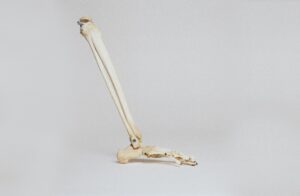X-linked Hypophosphatemia (XLH)
What is X-linked hypophosphatemia (XLH)?
X-linked hypophosphatemia (XLH) is an inherited disorder characterized by low levels of phosphate in the blood. These levels are low for those with XLH because phosphate is abnormally processed in the kidneys, which causes a loss of phosphate in the urine (phosphate wasting) and leads to soft, weak bones (rickets).
XLH is estimated to occur in one of every 20,000 births.
What are the symptoms of X-linked hypophosphatemia (XLH)?
XLH’s symptoms usually begin in early childhood and can vary in severity. Weakened bones result in early osteoarthritis, fractures, pain in the bones, joints, or teeth, dental abscesses, and easily dislocated joints. Affected individuals also experience bowed or bent legs, short stature, irregular skull growth, rachitic rosary, and enthesopathy. In a smaller number of causes, XLH leads to hearing loss, spinal stenosis, and abnormalities in the hip bone’s shape.
What causes X-linked hypophosphatemia (XLH)?
XLH is caused by mutations in the PHEX gene on the X chromosome. It is inherited in an X-linked dominant pattern. In 20%-30% of cases, XLH is not inherited but the result of a spontaneous mutation. Mutations in this gene can lead to an increased concentration of fibroblast growth factor 23 (FGF23), a growth hormone that regulates the reabsorption of phosphate in the kidneys. Too much FGF23 causes phosphate wasting in the kidneys, preventing maintenance of proper phosphate levels in the blood, which causes the symptoms of XLH.
How is X-linked hypophosphatemia (XLH) diagnosed?
XLH is generally diagnosed after a physical exam, blood tests, imaging tests, genetic tests, as well as looking into family history. A slow growth rate and noticeable bowing of the legs, knock-knees, abnormal head shape, dental abscesses, enlarged wrists and knees, low levels of phosphate, high levels of FGF23 in the blood, and phosphate wasting in the kidneys are key factors to look for in diagnosing. Molecular genetic testing is often used to confirm a diagnosis, as it finds a mutated copy of the PHEX gene.
XLH is often misdiagnosed, as a number of other conditions see symptoms like weak bones and irregular levels of phosphorus. Increased awareness is necessary to address this issue, as is further research into XLH.
What are the available treatments for X-linked hypophosphatemia (XLH)?
Treatment aims at improving growth, bone or joint pain, and preventing skeletal deformities caused by rickets. Phosphate supplements are generally required and are typically combined with high dose calcitriol, which increases calcium levels by increasing 1) the amount of calcium absorbed in the intestines and 2) the amount of calcium kept in the kidneys. This treatment is used for children until their bones are finished growing. If a diagnosis is given in infancy, growth hormones may be prescribed.
For adults, treatment is typically focused on relieving pain. Corrective surgery to fix bowed or bent legs and other skeletal abnormalities is an option, as is Crysvita (burosumab). The latter locates and binds to the abundance of FGF23 protein, lowering the amount of phosphorus that is lost through the kidneys. This allows for a higher amount of phosphorus in the blood. It is available for both children and adults with XLH. Additionally, frequent visits to the dentist can stop dental abscesses from forming.
Where can I find out more about X-linked hypophosphatemia (XLH)?
X-linked Hypophosphatemia (XLH) Articles

ASBMR Annual Meeting: Research Highlights XLH Disease Burden Over Time

Study: X-Linked Hypophosphatemia Has Detrimental Impact on the Ankles

This Social Worker is Transforming the Lives of Rare Disease Patients


X-Linked Hypophosphatemia: A Woman’s Discovery Changed Her Family Members’ Lives


Children with Deformities Caused by X-Linked Hypophosphatemia Rickets Now Have a Chance to Live a Normal Life







